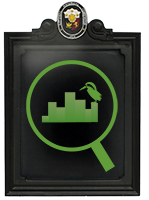 Minor Basilica of the Holy Child of Cebu | Church and Convent of Santo Niño Marker
Minor Basilica of the Holy Child of Cebu | Church and Convent of Santo Niño MarkerMinor Basilica of the Holy Child of Cebu | Church and Convent of Santo Niño Marker is a National Historical Landmark, NHCP; Registered Property, Cebu City located at Cebu City, Cebu City, Region VII.
Marker Text:
Church and Convent of Santo Niño
The Church and Convent erected by the Augustinian Fathers under the Rev. Andres Urdaneta in 1565 were the first established in the Philippines. Both were burned down on November 1, 1566. The second Church was likewise destroyed by fire in March of 1628, but rebuilt soon after (1628–1629) under the administration of the historian Rev. Juan de Medina, O.S.A. The present massive Church was designed and constructed during the Priorship of Rev. Juan Albarran O.S.A., (1735–1737). The Santo Niño, venerated in this Church since the time of Legaspi, is the center of intense devotion and religious pilgrimages through out the Visayas.
Year Unveiled: 1941
____
This Church has always been the Sanctuary of the Santo Niño, under the custody of the Augustinians. The number of priests assigned here ranged fro mthree to five aside from one or two lay brothers. In exceptional cases, there were up to six or seven priests.
The facade, following Classical pattern, is divided into two levels. Shallow pilasters divide each story into three segments. The bell tower serves as counterbalance to the convent located on the opposite far end. A triangular pediment crowns the solid, but not massive, facade. The focus of attention is on the center section. The trefoil arched main entrance is balanced by the side rectangular statued shallow niches. The vertical composition is echoed by the small design on the second level above the cornice, trefoil arch, the pedient and the side scroll-like ornament, a facade within a facade. A double edged triangular pediment crowns the facade. The reactangular shallow niches of the lower level are counterbalanced by semi-circular arched windows of the second. The bell tower has two blind and open windows alternating in shape, ending up in triangular pinnacles with a circular disc crwoned by balusters and a bulbous dome of Muslim influence.
(Angels in Stone: Augustinian Churches in the Philippines by Pedro S. Galende)